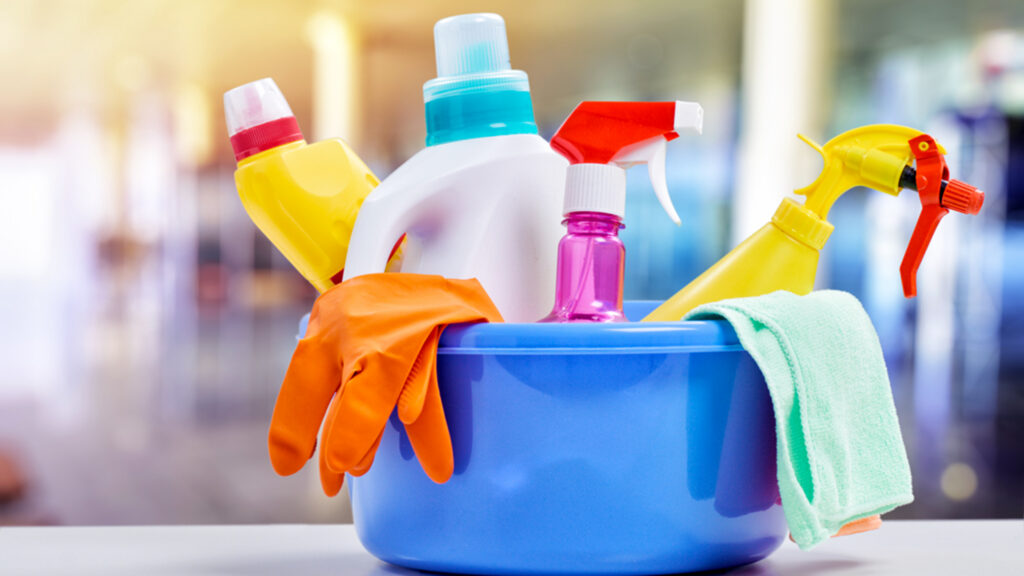Last menstrual period date:
When making bleach disinfectant solutions, it is essential to remember the concentration of bleach will depend on its purpose. Here are some of the vital mixture levels.
- For Hard surfaces like plates and countertops, 1 cup of bleach is to 5 gallons of water.
Bleach is the generic name for chemical products used domestically or industrially as a color remover from fabrics or fibers. As well as to clean and remove stains that are unable to be removed by just detergents.
Bleach is used for a lot of other things, and the most common secondary use is a bleach disinfectant solution. Diluted household bleach products are available to disinfect areas of the home or facilities in an industry. Bleach is caustic and emits potentially lethal fumes if not appropriately used; thus, a diluted solution like this is the best cleaning solution one can use. It is also recommended by the Centers for Disease Control (CDC) and the World Health Organization (WHO).
- For disinfecting healthcare facilities that may have been infected by contagions, 1-part bleach equals nine parts of water.
- For mold growth on hard surfaces; 1 cup of bleach to 5 gallons of water.
- For blood, body fluid spills, and when directed by public health, 1 cup of bleach to 9 cups of water.
- For washrooms and tables in use for child care changing; 7 tablespoons of bleach to cups of water.
- For toys and other items that children get their hands on, ¼ teaspoon of bleach to 2 cups of water.

Making the correct bleach disinfectant solution is only the first part of what you need to disinfect properly.
As bleach can irritate mucous membranes, the skin, and the airways, caution should always be exhibited when using it. And though already diluted, it is still super important to have proper cleaning tools and materials to go with it.
Be sure to follow the Centers for Disease Control (CDC) and the World Health Organization’s (WHO) recommendations:
- Before disinfecting a particular area or surface, make sure to clean up artificial dirt or grime.
- Wearing rubber gloves, make sure you pick the proper mixture levels of the bleach correctly for a certain area.
- Apply the solution to the area or the surface.
- To be able to disinfect, the bleach disinfectant solution needs to be in contact with the surface or the area.
- Discard the solution by wiping it down with microfiber wipes, remember to keep the gloves on.
- Wipe the now dry surface with a dry towel to make sure there is no residue of the bleach disinfectant solution.
Remember, there are also other precautionary measures that you must consider about using it to disinfect surfaces, and these include:
- When using, handling, and mixing your bleach solution, make sure to use them in a well-ventilated area.
- Never consume bleach or bleach products
- Read and make sure you follow instructions outlined on the bleach bottle
- Never mix bleach with any other chemicals containing ammonia or acids like toilet bowl cleaners, rust removers, etc.
- Don’t use expired bleach as bleach. Bleach starts to lose potency after opening it and, it cannot disinfect properly if it doesn’t have the right potency.
- Store your bleach correctly and away from the reach of children. Storing correctly means in an area where it doesn’t get direct sunlight or anywhere that is not above 77ºF
- Remember that bleach disinfectant solutions need to be remade after 24 hours.
- DON’T over-stock bleach
- NO NOT bleach on metals, nylons, silks, painted surfaces, wool, and dyed fabric
- Avoid touching or rubbing one’s eyes while using bleach or any bleach solutions. If any bleach, gets into your eyes, immediately rinse with water for at least 15 minutes and consult a doctor

FOR PREGNANCIES
As tackled earlier, bleach can be very hazardous to use as a cleaning solvent if applied directly. That’s why you should follow the formulas provided for diluting of bleaches. This will minimize the harmful effects caused by contact with human skin. Furthermore, these diluted formulas are safe for women who are expectant and their babies inside of them. As cleaning and disinfecting are needed to prepare for a new member of the family, it is equally important to make use of solutions that are not harmful to pregnancies.
BLEACH DISINFECTANT SOLUTIONS TODAY
Bleach disinfectant solutions are very much useful today with the novel coronavirus pandemic still very present. These solutions will disinfect much more than just that.
Cleaning and disinfecting regularly can help immensely to contain any kind of flu, foodborne illnesses, and much more. This, in turn, can help prevent and decrease other infections, leading to less burden on healthcare systems all around.
By using bleach solutions, not only are you using inexpensive methods to disinfect but also making sure that your disinfecting is actually doing the trick. In addition, it is the World Health Organization that has sent out reminders and tips on the prevention and control of today’s pandemic. They suggest that bleach disinfectant solutions have a high rate of potency to be able to disinfect and clean any surface that may contain traces of the virus.
My content
